Welcome to the fascinating world of lava tubes, nature’s remarkable underground formations created by flowing lava. In this article, we explore one of the most spectacular examples, the Thurston Lava Tube or Nahuku, nestled in the lush landscapes of Hawaiʻi Volcanoes National Park. As we delve into its history, geological significance, and visitor experiences, you’ll discover why this hidden gem is a must-visit for anyone traveling to Hawaii.
Highlights
- Experience the thrill of walking through a 500-year-old lava tube, formed when an underground river of molten lava drained away, leaving a hollow tunnel behind.
- The lava tube is easily accessible, with a well-maintained trail that is suitable for most fitness levels.
- The entrance and exit of the tube are surrounded by a lush Hawaiian rainforest. Before or after exploring the tube, enjoy a scenic walk through this verdant environment, rich with native plants and birds.
- Informational signs around the tube provide insights into the formation of lava tubes and the broader geological activity of the area.
- The unique lighting inside the tube also offers a challenge for those interested in capturing the textures and shapes of the tunnel walls.
- Combine the trip with other nearby attractions like the Kīlauea Visitor Center, volcanic craters, and hiking trails.
History
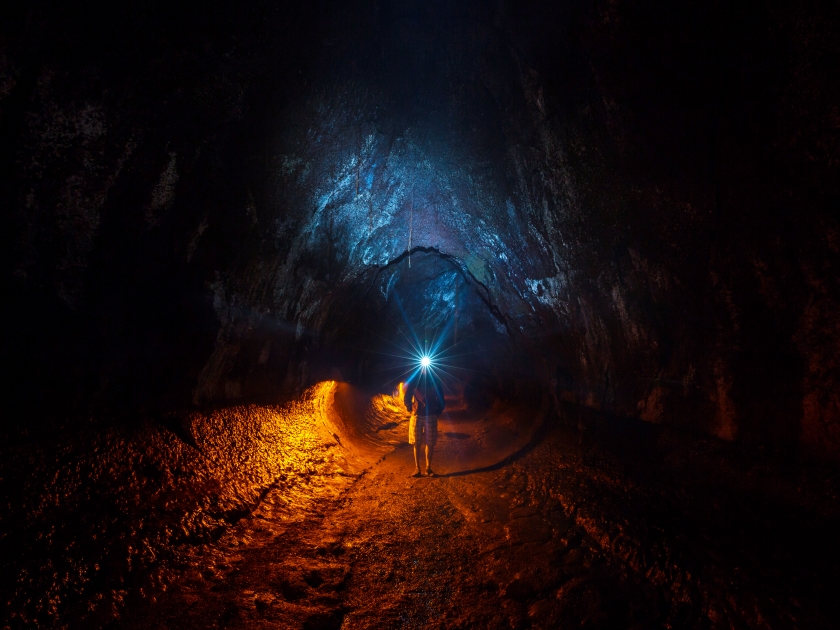
Natural Formation
The Thurston Lava Tube, known as Nāhuku in Hawaiian, originated approximately 500 years ago from a volcanic eruption on Kilauea. As molten lava flowed, it cooled and solidified on the outer layers while the interior lava continued to flow. Eventually, the inner lava drained away, leaving behind the hollow tunnel that we see today.
Discovery in 1913
In 1913, Lorrin Thurston, a local newspaper publisher, stumbled upon this hidden cave. The Hawaiian name, Nāhuku, translates to “protuberances,” a nod to the original rough and uneven ceiling of the cave, which was notably different from its current appearance.
Lost Beauty
Over the years, the cave’s natural beauty was diminished by souvenir hunters who removed many of the lava stalactites that once adorned the ceiling. This loss significantly altered the internal landscape of the lava tube.
Preserved Wonder
Despite past damages, the Thurston Lava Tube remains a preserved natural wonder within Hawaiʻi Volcanoes National Park. Today, it offers visitors a unique and accessible glimpse into the dynamic geological processes of lava tubes, protected for future generations to appreciate and explore.
Ecology and Environment
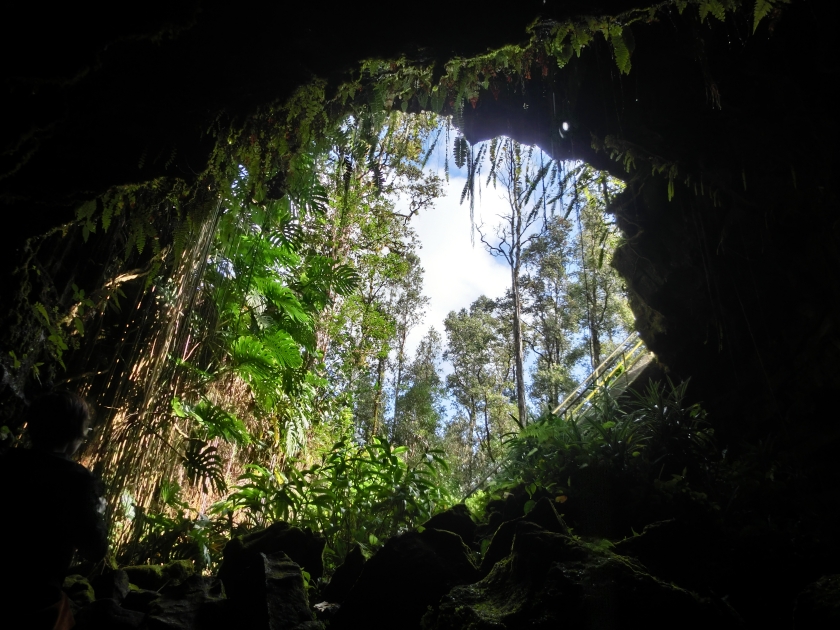
The Thurston Lava Tube hosts a unique ecosystem, characterized by its low-light, high-humidity environment that supports a variety of specialized organisms. Species such as ferns and mosses thrive in these conditions, creating a verdant lining along the cave’s interior. However, human interaction has posed challenges, including disturbance to the habitat and the introduction of non-native species. In response, ongoing conservation efforts are in place to protect and preserve this delicate ecosystem. These initiatives aim to minimize human impact, maintain the natural biodiversity of the lava tube, and ensure that it remains a sustainable environment for future generations to study and enjoy.
What to Expect When You Visit
Description of the walk to Thurston Lava Tube
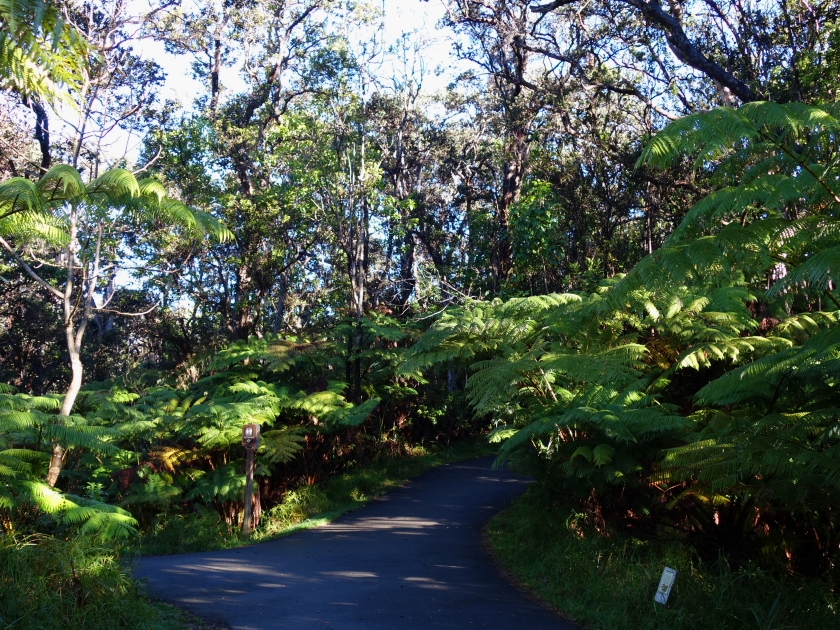
The walk to Thurston Lava Tube starts from a parking area within the Hawaii Volcanoes National Park. The trail leading to the tube is a well-maintained, half-mile loop that descends gently through a dense tropical rainforest. The verdant path is alive with the sounds of native birds and the rustling of leaves, setting a serene backdrop as you approach the entrance of the lava tube. This scenic route is suitable for all ages and provides numerous photo opportunities amid the lush greenery.
What you'll see inside the tube (stalactites, flowstone, etc.)
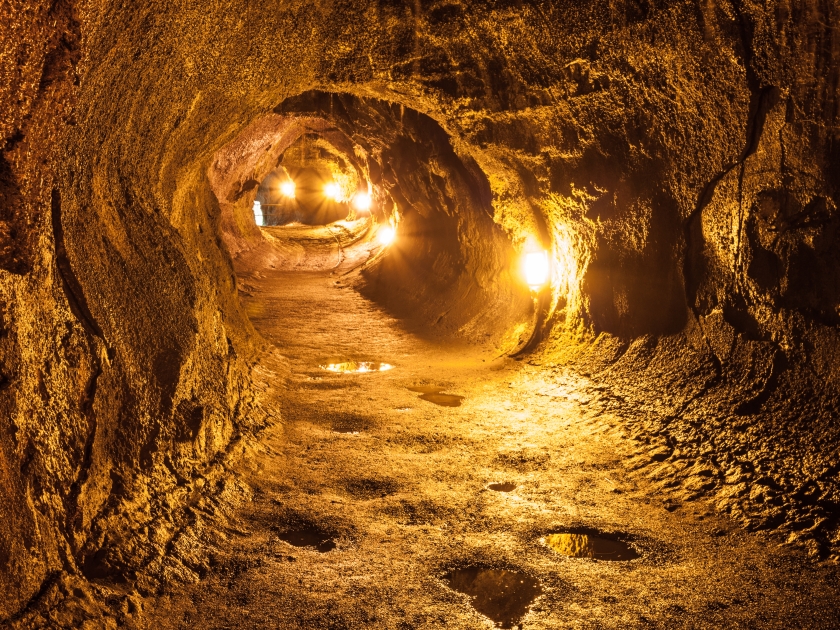
Stepping inside Thurston Lava Tube, you are immediately enveloped in a cool, damp environment distinctly different from the forest outside. The ceiling of the tube is dotted with small stalactites and patches of flowstone, created by minerals deposited over centuries. The walls show various shades of color, reflecting the mineral content and the temperatures at which the lava cooled. Subtle lighting installed along the path highlights these features, enhancing the otherworldly atmosphere within the cave.
Length and duration of the tour
The tour through Thurston Lava Tube itself can be completed in about 20 minutes, depending on your pace. Since it’s a self-guided walk, you have the flexibility to spend as little or as much time as you like exploring the details inside the tube. The entire loop trail, including the walk through the forest to and from the lava tube, typically takes about an hour to complete, making it a convenient and enriching experience even for those with limited time.
Planning Your Visit
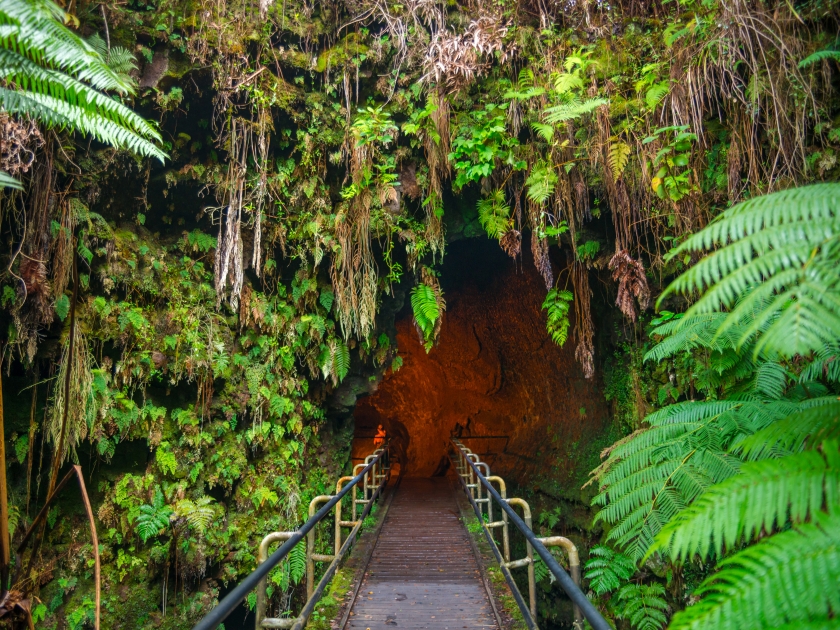
Best Time of Year to Visit Thurston Lava Tube
The best time to visit Thurston Lava Tube is during the drier months from May to October. This period typically offers clearer skies and less rainfall, enhancing your walk through the lush surroundings and minimizing the chances of slippery paths. Additionally, visiting early in the morning or later in the afternoon can help you avoid the peak crowds that often gather during midday, allowing for a more serene exploration of the lava tube.
Park Hours and Any Entry Fees
Hawaii Volcanoes National Park, where Thurston Lava Tube is located, is open 24 hours a day year-round, including holidays. The park charges an entry fee per vehicle or person if entering by bike or on foot, which grants access for seven days. This fee includes all park attractions, including the Thurston Lava Tube. It’s advisable to check the park’s official website for the most current pricing and any potential alerts or changes in access before your visit.
Weather Considerations and What to Wear
The weather around Thurston Lava Tube can be quite variable, with possible rain showers even during the drier months. It’s recommended to wear comfortable, moisture-wicking clothing and sturdy, waterproof hiking shoes to navigate the occasionally muddy trails. Since temperatures inside the tube are cooler than the outside tropical climate, carrying a light jacket is also advisable. Don’t forget to bring a hat and sunscreen for protection against the sun during the forest walk.
Tips for Visiting
- Arrive Early or Late: Visit early in the morning or later in the afternoon to avoid the larger crowds and experience a quieter, more intimate exploration of the lava tube.
- Wear Appropriate Footwear: Choose sturdy, non-slip hiking shoes or boots as the path can be slippery, especially if it has rained recently.
- Bring a Flashlight: Although the path inside the lava tube is lit, a flashlight can help you see the tube’s features more clearly and enhance your exploration.
- Pack Light Rain Gear: Be prepared for intermittent rain showers, typical of the area, by bringing a light waterproof jacket or a poncho.
- Check the Park Website: Before your visit, check the official Hawaii Volcanoes National Park website for any updates on park hours, entry fees, and possible trail closures.
- Stay on Marked Trails: Protect the natural environment and yourself by staying on marked trails and following park guidelines and signs.
- Carry Water and Snacks: Keep hydrated and energized by carrying enough water and some snacks, especially if you plan to explore other areas of the park.
- Use Sun Protection: The walk to the tube is shaded, but other parts of the park are more exposed, so wear sunscreen and a hat to protect against the sun.
- Be Camera Ready: The unique landscape offers great photo opportunities, so ensure your camera or phone is charged and ready.
- Respect Wildlife and Nature: Observe any wildlife from a distance, do not feed animals, and take all trash with you to help preserve the park’s natural beauty.
Photography Tips
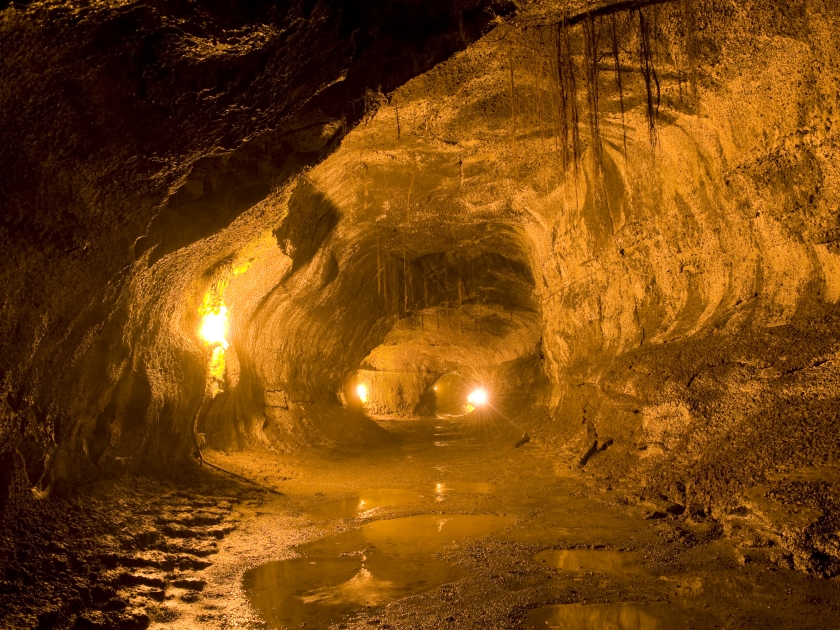
For the best shots inside the tube, focus on the area near the entrance where natural light spills in, creating dramatic lighting effects. When capturing the interior, use a higher ISO setting to compensate for low light conditions without introducing too much noise. Since the use of tripods and flash photography may be restricted to minimize disturbance to other visitors and preserve the natural habitat, consider using a lens with a wide aperture to increase light intake and stabilize your camera against a solid surface to avoid blurriness. Always check the latest park regulations regarding photography equipment before your visit to ensure compliance with park rules.
Nearby Attractions
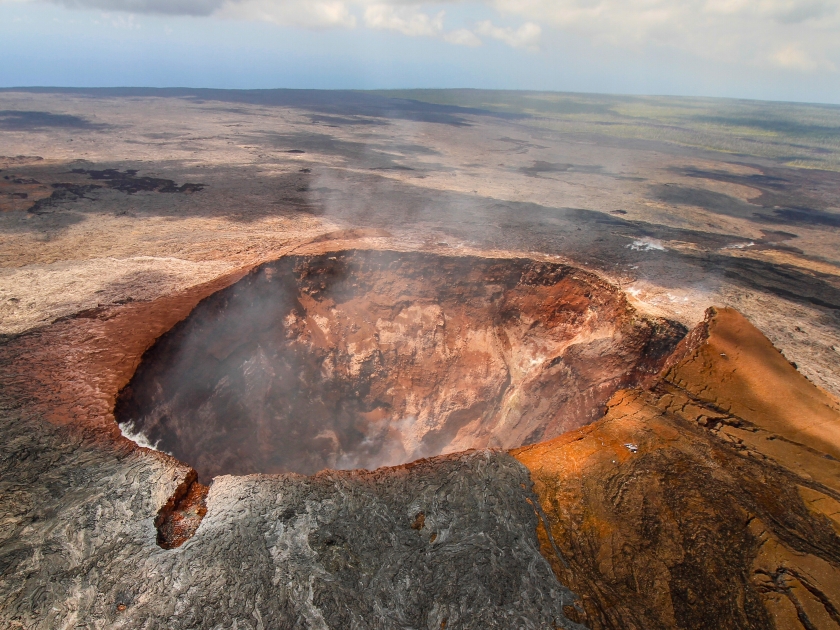
Beyond the Thurston Lava Tube, Hawaii Volcanoes National Park is teeming with other fascinating sites that merit a visit. The Kīlauea Iki Trail is a popular choice, offering hikers a striking look at a solidified lava lake and steam vents, a testament to the island’s volcanic activity. For a day full of exploration, combine your visit to the lava tube with a drive along Crater Rim Drive for panoramic views of the Kīlauea caldera. When it comes to dining, the nearby town of Volcano offers a range of options, from the cozy Kīlauea Lodge and Restaurant, known for its local cuisine, to the casual Volcano House, where you can dine with a view of the Halema’uma’u crater.
Frequently Asked Questions (FAQs)
Thurston Lava Tube, also known as Nāhuku, is a natural lava cave located in Hawaiʻi Volcanoes National Park on the Big Island of Hawai’i. It was formed by flowing lava which drained away, leaving a hollow tunnel.
It is situated within Hawaiʻi Volcanoes National Park, near the summit of Kīlauea volcano, one of the most active volcanoes in the world.
The accessible portion of Thurston Lava Tube for visitors is about 600 feet (183 meters) long.
Yes, the Thurston Lava Tube is open to the public and can be accessed via a short trail that loops through the lush tropical forest.
No special ticket is required beyond the entrance fee to Hawaiʻi Volcanoes National Park to visit Thurston Lava Tube.
Thurston Lava Tube is open 24 hours a day, but lighting is provided only during the park’s regular operating hours, which are typically from sunrise to sunset.
How to Get There
By Car
Start from Hilo, Hawaii, and head southwest on Highway 11 (also known as the Hawaii Belt Road) towards the Hawaii Volcanoes National Park. Continue on Highway 11 for approximately 30 miles until you reach the park’s entrance. After entering the park, follow the signs leading to the Thurston Lava Tube, also known as Nāhuku. Parking is available near the tube, but it can be limited during peak visiting hours, so consider arriving early.
By Bus
Public transportation options to Hawaii Volcanoes National Park are limited, and direct bus services to the park might not be available. Visitors should check with local bus services in Hilo or the surrounding areas for any routes that might take them close to the park. Another option is to look for tour operators or shuttle services that offer trips to the park, which often include stops at key attractions, including the Thurston Lava Tube. Booking a tour or shuttle service can be a convenient, albeit more expensive, alternative to public buses and provides a hassle-free experience to travelers who prefer not to drive.
Note: Always check the latest park conditions and transportation schedules before planning your visit, as they can change due to weather and volcanic activity.
Follow the Paths Less Traveled!
Unlock the secrets of Hawaii’s volcanic landscape by visiting the captivating Thurston Lava Tube. Your journey here connects you deeply with nature’s power and beauty. Keep to the paths, carry out what you bring in, and cherish the natural habitat that surrounds you.




